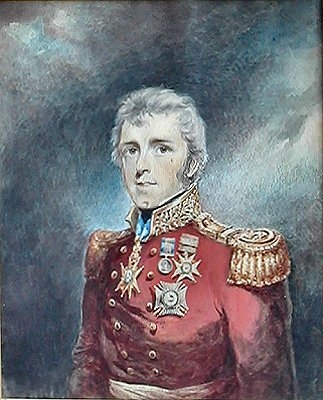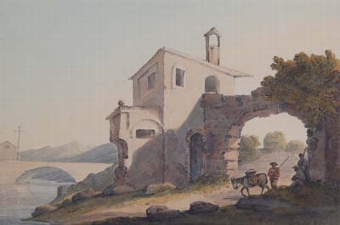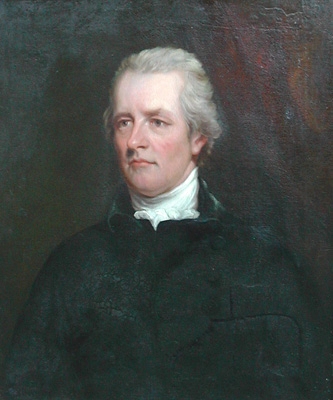a surgeon tending to his patients foot in an interior
- View other items in:
- antiques interior design modern and vintage
- other interior design
artware ltd
Enquire about this antique
Artware Ltd has 565 antiques for sale.
click here to see them all
David Teniers the Younger was the more celebrated son of David Teniers the Elder, almost ranking in celebrity with Rubens and Van Dyck. His son David Teniers III and his grandson David Teniers IV were also painters. His wife Anna nee, Anna Breughel was the daughter of Jan Brueghel the Elder and the granddaughter of Pieter Bruegel the Elder. He became a master of the Antwerp Guild of St Luke in 1632?3 after an apprenticeship to his father, with whom he also collaborated. From the outset Teniers the younger was an extremely productive painter, thanks to his good relationship with Antwerp art dealers. During the 1630s he produced small-format religious scenes on commission for Chrysostoom van Immerseel, who supplied the Spanish market. However, it was Teniers?s genre pieces that were greatly prized by the Antwerp dealers and made him famous. Teniers quickly became one of Antwerp?s pace-setting and most successful painters, which probably accounts for his assumption of functions that carried a degree of social prominence, such as the office of Master of the Chapel of the Holy Sacrament in the St Jacobskerk between 1637 and 1639, and Dean of the Guild of St Luke in 1644?5. He also received such prestigious commissions as the large group portrait of the Arquebusiers? Company (1643; Hermitage, St Petersburg). During this same Antwerp period he also executed commissions for Antonine Triest (1576?1657), Bishop of Bruges, one of the most prominent patrons of the arts in the southern Netherlands. By 1647 Teniers was working for Archduke Leopold William, Governor of the southern Netherlands from 1646, and in 1651 he became the Archduke?s court painter. He consequently moved from Antwerp to the court at Brussels, and in 1656 he bought a building near the archducal palace and had it rebuilt as a spacious and handsome house-cum-studio. Teniers?s earliest work is remarkable for its similarity to the work of Adriaen Brouwer, who settled in Antwerp in 1631 and brought a new freshness to the Bruegelian tradition of peasant scenes. From Brouwer, Teniers took the sinister and satirical figures as well as their setting in a smoky, half-darkened interior. Like those of Brouwer, these paintings are executed in a somewhat monochrome palette. The most characteristic examples include The Smokers and the Drinking Peasants (1634; Karlsruhe, Staatl. Kunsthalle). Some of Teniers?s early pieces were formerly attributed to Brouwer, and it is known that from the 1630s Teniers was making copies of Brouwer?s work. In spite of Teniers?s close adherence to Brouwer?s style, his own character can be clearly distinguished, particularly in the compositions, which, in contrast to Brouwer?s expressive directness and animated movement, are somewhat artificial. In the early years of his career Teniers also painted scenes with middle-class figures. In the 1640s and 1650s, Teniers began to draw and paint open-air peasant fairs. These are partly indebted to similar works by his father-in-law. They are set in front of an inn and often include a group of nobles who watch the revels with amusement The scenes are executed in a richly varied and pastel-tinted palette. The areas of colour are saturated with light and evoke an unmistakable illusion of tactile effects. The smoky and monochrome tonality of the interiors from the 1630s is replaced by a luminous, silvery atmosphere, in which the peasants sit at their ease, conversing or playing cards (e.g. Peasants Carousing, 1644; Wallace Collection, London). These paintings exemplify a completely different and far more positive attitude to country life and the peasantry than the satirical pieces influenced by Brouwer. Teniers?s later peasant scenes have a more arcadian spirit (a fairly widespread characteristic of the fashionable ?lite of the period). The people in these landscapes have completely lost the sinister and satirical distortion of the earlier paintings. There are numerous surviving sketchy drawings from life from this period, which indicate Teniers?s concern with an accurate portrayal of his characters. Teniers?s appointment as court painter meant that he was responsible for enlarging and displaying Leopold William?s magnificent art collection. In particular, he was involved in the purchase of a large number of Italian, and especially Venetian, masterpieces from the confiscated collections of Charles I and his Jacobite supporters. The extent and appearance of his patron?s collection can be seen in the artist?s eight surviving views of his gallery. Teniers also produced an illustrated catalogue of the Archduke?s collection, the Theatrum pictorium (1660). For the engravers he made small-scale copies of all the Italian paintings in the collection. Teniers also produced numerous original paintings for his patron, including both small-scale religious scenes and his characteristic genre scenes of peasant life. Other prominent figures in the Spanish Habsburg court at Brussels also showed interest in Teniers?s work. Most important among them was Leopold William?s successor, Don Juan of Austria, who was Governor from 1656 to 1659. Teniers?s work was also appreciated by the nobility outside the southern Netherlands: the Dutch Stadholder Prince William II of Orange, Queen Christina of Sweden and, particularly, King Philip IV of Spain. During this period, Teniers?s way of life was deliberately aristocratic, as is evident from his attempt to be ennobled and his purchase of a country house, Drij Toren (Three Towers), at Perk. In 1663 Teniers finally achieved noble status. This and his position as court painter occasioned a great deal of professional jealousy among his less privileged colleagues in Brussels. However, his relationship with the artistic community in Antwerp remained excellent, partly owing to his contacts with the influential local art dealers, one of whom, the firm of Matthijs Musson (c. 1600?78), was particularly important in building Teniers?s international reputation. In 1663, urged by his Antwerp colleagues, Teniers used his prominent post at court to lobby successfully for the establishment of an art academy in their city like those in Paris and Rome. In Teniers?s artistic work after c. 1660, the arcadian element dominates. Humanity and nature seem to have fused in an evocatively idyllic moment. The dominant themes also changed: instead of the buzzing activity of the peasant fairs, he painted primarily pastoral scenes with a limited number of figures. There is some indication that Teniers?s last years were financially difficult, possibly owing to the unsettled international climate culminating in the War of the Spanish Succession (1702?13).
Antiques.co.uk Ref: V676M3CB
- Materials:
- Oil on Panel
- Width (cm):
- 16 x 14 in. (41 x 36 cm.)
Artware Ltd
Artware Fine Art specialises in fine antique, decorative and historical portraits and topographical pictures . We cover a period from the 17th and 18th centuries through to the 19th & 20th Centuries. We have over 150 portraits in stock, which can be viewed on our web site, each historical portrait has well researched biographical information both on the sitter and the artist.
Contact details
18 La gare
51 Surrey row
London
Greater London
SE1 0BZ
UNITED KINGDOM
T: 0207 921 97904
E: greg@artwarefineart.com
W: www.artwarefineart.com














